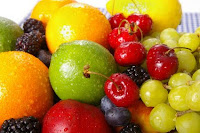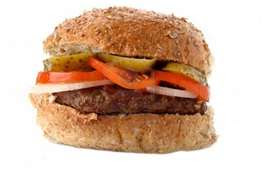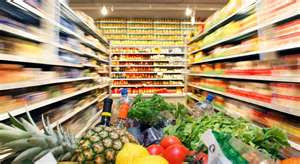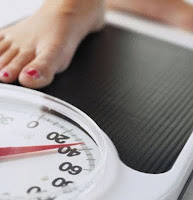Around Ujima Happenings
Search
Wednesday, January 25, 2012
Wednesday Wellness Tip
Tuesday, January 24, 2012
Dancing your way to health
 At some point in life, we all have danced to our favorite song at a party, club or in front of the TV in the living room. What you probably didn’t know is that besides being fun, dancing is a great aerobic activity which provides the body with many health benefits.
At some point in life, we all have danced to our favorite song at a party, club or in front of the TV in the living room. What you probably didn’t know is that besides being fun, dancing is a great aerobic activity which provides the body with many health benefits.Top Health Benefits of Dancing
1. Increase energy and improve strength
2. Dancing is a completely natural and intuitive way to get your body in good shape and increase your energy levels.
3. Increase muscle tone and coordination
4. Lower your risk of heart disease
Some studies even show that it improves cardiovascular health more than cycling or walking.
5. Help you manage your weightDancing is an exceptional way to lose weight. It can burn as many calories as walking, swimming or riding a bike. With 1/2 hour of sustained dancing you can burn between 200 and 400 calories.
6. Strengthen the bonesDance is considered a weight-bearing exercise which can prevent osteoporosis and strengthen bones.
7. Increase your stamina and flexibilityDance is a physical exercise. Exercise increases stamina and flexibility.
8. Build confidence and self-esteem. Dance gives you a sense of success and achievement when you master it.
9. Provide opportunities to meet people.
10. Improved well-being Exercise elevates your mood by raising the endorphins or feel good chemicals. That gives you a sense of general well-being. Even a little dancing can improve your mood.
Monday, January 23, 2012
Eat your COLORS!
 Have you ever noticed the wonderful array of colors found in fruits and vegetables? Yellow peppers, orange carrots, red tomatoes, blue blueberries, black blackberries, purple eggplants?
Have you ever noticed the wonderful array of colors found in fruits and vegetables? Yellow peppers, orange carrots, red tomatoes, blue blueberries, black blackberries, purple eggplants?When I was younger I heard that having a plate of colors for dinner is healthy. I never really knew what that meant or considered it when eating, but after doing a bit of reading, I found that having colors on your plate isn’t just pretty to look at: it’s hugely beneficial to your body.
The colors in the fruits and vegetables come from chemicals called antioxidants. Fruits and vegetables go through a complex process to receive their energy from the sun. The health of these plants can sometimes be threatened by many electrons whizzing around in the plant. If the electrons were to not follow the correct process, they would create free floating radicals that would severely damage the plant. Luckily, the plants are full of antioxidants that intercept the free floating radicals. As humans, we produce free radicals and are exposed to free radicals throughout our lifetime. However, we do not produce antioxidants so it’s important for us to eat many plants to get the antioxidant benefits.
So next time you’re in the store, go to the produce section and see how many colors you can get!
Here are some of my favorites:
Raspberries
Eggplants
Blackberries
Plums
Cherries
Grapes

Friday, January 20, 2012
Friday's Fun Recipe: Oatmeal Burger & Grilled Vegetables
 Recipe provided by Alicia Lacovara
Recipe provided by Alicia Lacovara Chile Vinaigrette Grilled Vegetables:
1 tbsp chopped Serrano chile
· ¾ tsp salt
· 6 garlic cloves, crushed
· 3 tbsp red wine vinegar
· 2 tbsp water
· 2 tbsp fresh lemon juice
· 1 ½ tbsp Extra virgin olive oil
· 1 ½ tbsp anchovy paste
· 1 small eggplant
· 1 yellow summer squash
· 1 Zucchini
· 2 small red onions
· 2 bell peppers (red & green)
Burger Patties:
1 lb of ground turkey or lean beef (or combine half and half)
1 egg
½ cup rolled oats (oatmeal)
dash of garlic powder
dash of onion powder
ground pepper
1 tbsp worshire sauce
Whole wheat burger buns
Low-fat cheddar cheese
Lettuce, Tomato, onion, etc.
Directions:
1. Mix all vinaigrette ingredients in bowl. Dice eggplant, squash, zucchini and
peppers. Quarter the red onions. Toss vinaigrette and vegetables into large
ziplock bag and shake around. Let marinate for 1-hour minimum.
2. Meanwhile, thoroughly mix burger patty ingredients. Portion off desired amount, and form burger patties.
3. Pre-heat grill. Place burger patties on grill. Cook until no longer pink, but
without charring the outside of the patty. Using vegetable screen, cook vegetables until soft and tender, slightly blackened.
4. Dress burgers with desired toppings. Serve with grilled vegetables.
Nutrition Information Per Serving:
4 servings total; each includes 1 pattie, 1 roll, 1 slice of cheese
Calories: 362
Protein: 30g
Total Fat: 14g
Total Carbohydrates: 30g
Wednesday, January 18, 2012
Wednesday Wellness Tip
Tuesday, January 17, 2012
The many sources of protein
Newsflash!

There are MANY other forms of food that will provide you with more than enough protein for your daily requirement. Men aged 19 and up should consume around 56 grams of protein a day. Women aged 19 and up should consume around 46 grams a day. We often eat more than necessary throughout the day.
 Here are a few examples of non-meat foods with significant amounts of protein.
Here are a few examples of non-meat foods with significant amounts of protein.Tempeh(a hearty meat substitute). 1 cup = 30g
Quinoa. 1 cup = 24g
Whole wheat pasta. 1 cup = 15g
White beans. 1 cup = 15g
Greek yogurt. 1 serving = 14g
Almonds. 24 almonds = 6g
Whole Wheat English Muffin – 1 muffin = 6g
Brown rice. 1 cup = 5g
Soy products. Depending on the type of product, soymilk, soybeans, tofu, the amount of protein can range from 14-40g.

Monday, January 16, 2012
Eating healthy on a budget
 The best way to eat healthfully and frugally (i.e. on a budget) is to cook at home!
The best way to eat healthfully and frugally (i.e. on a budget) is to cook at home! - It also allows you to take advantage of deals on food items.
- Look at the weekly ads for your local grocer.
- Make a list of what you want/need.
- Shop the perimeter of the grocery store and not the middle aisles. The middle aisles usually have unhealthy items like processed foods, chips and ice cream.
- Organic does not necessarily equal healthy. You don’t have to buy organic products to have a healthy diet. Nonorganic fruits and vegetables contain all the same nutritional values.
Friday, January 13, 2012
Friday's Fun Recipe: Bread Soup w/ Bread Croutons
Ingredients:
Olive oil for cooking
½ white onion, chopped
2 garlic cloves, minced
2 medium carrots, chopped into ½ inch pieces
2 medium celery stalks, chopped into 1 inch pieces
1 ½ quarts chicken broth (low sodium)
1 can (15 oz) cannellini beans (drained, rinsed)
4 cans of canned whole tomatoes, quartered, with some juice
2 cups chopped swiss chard (or another leafy green, like kale, spinach or collards)
3 cups day-old Italian bread (not sandwich bread), ripped into 1 ½ inch pieces
Salt and pepper to taste
Garlic powder (not garlic salt)
2 tbsp of each:
* chopped fresh basil
* chopped fresh cilantro
* parmesan cheese
Instructions:
1. Heat 1 tsp olive oil in large pot over medium heat. Add onion, garlic and cook until transparent (about 5 minutes). Add carrots and celery, and cook stirring often (5 more minutes). Stir in chicken broth and beans, and bring to a boil. Reduce heat, cover, and simmer for about 15 minutes. Add quartered tomatoes and swiss chard, and simmer for another 15 minutes, covered.
2. Meanwhile, pre-heat oven to 350o. Spread bread pieces out on a baking sheet, and drizzle with 1-2 tbsp olive oil. Sprinkle with garlic powder, pepper, and a bit of salt. Toast for about 10
2.minutes and then set aside.
3. Just before serving, add basil and cilantro, and add salt and pepper to taste.
Divide soup among serving bowls and top each with a few warm croutons. Grate parmesan
4.directly over soup if you like!
Nutrition Information per serving:
Serving Size is 1-cup
Calories: 212
Fat: 9 g
Cholesterol: 0 g
Protein: 10 g
Wednesday, January 11, 2012
Wednesday Wellness Tip
Tuesday, January 10, 2012
"A Plate for Everything"
 Say good-bye to that confusing food pyramid! The USDA has just replaced the mind-boggling food pyramid with what they are calling the food "plate."
Say good-bye to that confusing food pyramid! The USDA has just replaced the mind-boggling food pyramid with what they are calling the food "plate."
To answer what might be your first question, yes it really is as easy to use as it looks!
The food plate is very simple in design. You portion your meal according to the divisions for the five food groups represented on the food plate icon. The plate itself is divided into four colored sections, representing fruits, vegetables, grains, and protein. Therefore, half of your plate is reserved for fruits and vegetables, while the other half is devoted to grains and protein. The fifth group, the dairy products, are shown as a smaller circle in the upper right hand corner of the plate.
The American Medical Association (AMA) even commented on how the food plate, "...clearly presents what a healthy meal should look like and makes it easier for people to translate food group recommendations directly onto their plates. The clearer emphasis on portion size and quantity is particularly important for achieving and maintaining a healthy weight.”
For more information and tips, visit http://www.choosemyplate.gov/. You will find many techniques to get you on track to better health, including ways to enjoy food, eat less, make at least half of your grains whole grains, and monitor sodium in the foods you buy.
After years of pushing the food pyramid aside, this new food plate may finally make proper nutrition a realistic goal for us all!
Monday, January 9, 2012
Body Mass Index (BMI)

An indirect measure of body fat calculated from a person's weight and height .
Formula: weight (lb) x 703
[height (in)]2
Example: Weight = 150 lbs,
Height = 5'5" (65")Calculation: [150 ÷ (65)2] x 703
= 24.96
What does it mean?
BMI Weight Status:
Below 18.5 Underweight
18.5 – 24.9 Normal
25.0 – 29.9 Overweight
30.0 and Above Obese
Wednesday, January 4, 2012
Wednesday Wellness Tip
If you enjoy having several snacks, fruits or nuts would be a good choice instead of potato chips or candy bars.
Sunday, January 1, 2012
Healthy Weight Loss for the New Year!
 Put everything you’ve ever heard about weight loss behind. This year, you should have a new outlook on weight management and weight loss. Most weight loss resolutions fail because they lack thoughtful plans and preparations, which are necessary to change habits and behavior. Permanent weight loss requires changes in eating behavior and in physical activity. Bad habits must be broken and good habits have to be formed. There are no shortcuts.
Put everything you’ve ever heard about weight loss behind. This year, you should have a new outlook on weight management and weight loss. Most weight loss resolutions fail because they lack thoughtful plans and preparations, which are necessary to change habits and behavior. Permanent weight loss requires changes in eating behavior and in physical activity. Bad habits must be broken and good habits have to be formed. There are no shortcuts.Be Active Every Day…
1. Have fun by doing it your way!
-Find activities that you enjoy whether it is dancing, swimming, hiking, biking, etc….
2. Start small, increase your activity over time
-Begin by taking a 10 minute walk then increase the pace and time you spend walking every day.
3. Do it with others
-Find an exercise buddy.
-Join a gym or fitness class.
-Exercise with your family
-Eat a balanced diet…
-Eat more fruits, vegetables, whole grains, low-fat milk products
-Limit your intake of saturated fats, trans fats, cholesterol, salt (sodium), and added sugars
4. Set realistic, motivating goals.
-Track your progress as you go.
For more tips on how you can acheive your weight loss goals visit http://www.diabetes.org/food-and-fitness/fitness/weight-loss/weight-loss-matters-tip.html
